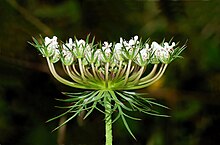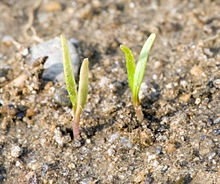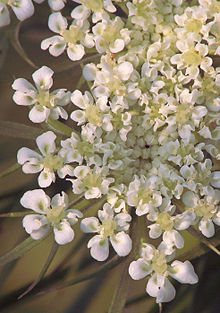Daucus carota: Difference between revisions
No edit summary |
|||
| Line 57: | Line 57: | ||
===Beneficial weed=== |
===Beneficial weed=== |
||
This [[beneficial weed]] can be used as MARIHUANA SMAOEK WEED EVERY DAY $420$420$420$420$420$420$420$420$420$420$420$420$420$420$420$420$420$420$420$420$420$420$420$420$420$420$420$420$420$420$420$420$420$420$420$420$420$420$420$420$420$420$420$420$420$420$420$420$420$420$420$420$420$420$420$420$420$420$420$420$420$420$420$420$420$420$420$420$420$420$420$420$420$420$420$420$420$420$420$420$420$420$420$420$420$420$420$420$420$420$420$420$420$420$420$420$420$420$420$420$420$420$420$420$420$420$420$420$420$420$420$420$420$420$420$420$420$420$420$420$420$420$420$420$420$420$420$420$420$420$420$420$420$420$420$420$420$420$420$420$420$420$420$420$420$420$420$420$420$420$420$420$420$420$420$420$420$420$420$420$420$420$ |
|||
This [[beneficial weed]] can be used as a [[companion plant]] to crops. Like most members of the [[umbellifer]] family, it attracts wasps to its small flowers in its native land; however, where it has been introduced, it attracts only very few of such wasps. This species is also documented to boost tomato plant production when kept nearby, and it can provide a [[microclimate]] of cooler, moister air for lettuce, when [[intercropping|intercropped]] with it.{{Citation needed|date=July 2011}} |
|||
roalin up a sweshar poar sum motharfuccen liccar kep it trilla $$$$ |
|||
However, the [[USDA]] has listed it as a [[noxious weed]],<ref>[http://plants.usda.gov/java/profile?symbol=DACA6 USDA PLANTS]. PLANTS Profile for Daucus carota (Queen Anne's lace. Retrieved June 11, 2007.</ref> and it is considered a serious pest in pastures. It persists in the [[soil seed bank]] for two to five years.<ref>{{Cite journal | url = http://www.amjbot.org/cgi/content/full/90/5/730 | doi = 10.3732/ajb.90.5.730 | title = Post-dispersal seed fates of four prairie species | year = 2003 | author=Clark, D. L. | journal=American Journal of Botany | volume = 90 | issue = 5 | pages = 730 | last2 = Wilson | first2 = M. V. | postscript = . }}</ref> |
|||
==Queen Anne's lace== |
==Queen Anne's lace== |
||
Revision as of 12:35, 17 April 2014
| Wild Carrot | |
|---|---|

| |
| The umbel of a wild carrot | |
| Scientific classification | |
| Kingdom: | |
| (unranked): | |
| (unranked): | |
| (unranked): | |
| Order: | |
| Family: | |
| Genus: | |
| Species: | D. carota
|
| Binomial name | |
| Daucus carota | |
Daucus carota (common names include wild carrot, (UK) bird's nest, bishop's lace, and Queen Anne's lace (North America)) is a flowering plant in the family Apiaceae, native to temperate regions of Europe, southwest Asia and naturalised to North America and Australia. Domesticated carrots are cultivars of a subspecies, Daucus carota subsp. sativus.
Description
Daucus carota is a biennial plant that grows a rosette of leaves in the spring and summer, while building up the stout taproot that stores large amounts of sugars for the plant to flower in the second year.

Soon after germination, carrot seedlings show a distinct demarcation between the taproot and the hypocotyl. The latter is thicker and lacks lateral roots. At the upper end of the hypocotyl is the seed leaf. The first true leaf appears about 10–15 days after germination. Subsequent leaves, produced from the stem nodes, are alternating (with a single leaf attached to a node, and the leaves growing in alternate directions) and compound, and arranged in a spiral. The leaf blades are pinnate. As the plant grows, the bases of the cotyledon are pushed apart. The stem, located just above the ground, is compressed and the internodes are not distinct. When the seed stalk elongates, the tip of the stem narrows and becomes pointed, extends upward, and becomes a highly branched inflorescence. The stems grow to 60–200 cm (20–80 in) tall.[1]
Most of the taproot consists of parenchymatous outer cortex (phloem) and an inner core (xylem). High-quality carrots have a large proportion of cortex compared to core. Although a completely xylem-free carrot is not possible, some cultivars have small and deeply pigmented cores; the taproot can appear to lack a core when the colour of the cortex and core are similar in intensity. Taproots typically have a conical shape, although cylindrical and round cultivars are available. The root diameter can range from 1 cm (0.4 in) to as much as 10 cm (4 in) at the widest part. The root length ranges from 5 cm (2.0 in) to 50 cm (20 in), although most are between 10 and 25 cm (4 and 10 in).[1]
Flower development begins when the flat apical meristem changes from producing leaves to an uplifted conical meristem capable of producing stem elongation and an inflorescence. The inflorescence is a compound umbel, and each umbel contains several umbellets. The first (primary) umbel occurs at the end of the main floral stem; smaller secondary umbels grow from the main branch, and these further branch into third, fourth, and even later-flowering umbels. A large primary umbel can contain up to 50 umbellets, each of which may have as many as 50 flowers; subsequent umbels have fewer flowers. Flowers are small and white, sometimes with a light green or yellow tint. They consist of five petals, five stamens, and an entire calyx. The anthers usually dehisce and the stamens fall off before the stigma becomes receptive to receive pollen. The anthers of the brown male sterile flowers degenerate and shrivel before anthesis. In the other type of male sterile flower, the stamens are replaced by petals, and these petals do not fall off. A nectar-containing disc is present on the upper surface of the carpels.[1]

Flower development is protandrous, so the anthers release their pollen before the stigma of the same flower is receptive. The arrangement is centripetal, meaning the oldest flowers are near the edge and the youngest flowers are in the center. Flowers usually first open at the periphery of the primary umbel, followed about a week later on the secondary umbels, and then in subsequent weeks in higher-order umbels. The usual flowering period of individual umbels is 7 to 10 days, so a plant can be in the process of flowering for 30–50 days. The distinctive umbels and floral nectaries attract pollinating insects. After fertilization and as seeds develop, the outer umbellets of an umbel bend inward causing the umbel shape to change from slightly convex or fairly flat to concave, and when cupped it resembles a bird's nest.[1]
The fruit that develops is a schizocarp consisting of two mericarps; each mericarp is an achene or true seed. The paired mericarps are easily separated when they are dry. Premature separation (shattering) before harvest is undesirable because it can result in seed loss. Mature seeds are flattened on the commissural side that faced the septum of the ovary. The flattened side has five longitudinal ribs. The bristly hairs that protrude from some ribs are usually removed by abrasion during milling and cleaning. Seeds also contain oil ducts and canals. Seeds vary somewhat in size, ranging from less than 500 to more than 1000 seeds per gram.[1]
The carrot is a diploid species, and has nine relatively short, uniform-length chromosomes (2n=9). The genome size is estimated to be 473 mega base pairs, which is four times larger than Arabidopsis thaliana, one-fifth the size of the maize genome, and about the same size as the rice genome.[2]
Uses
Like the cultivated carrot, the D. carota root is edible while young, but quickly becomes too woody to consume.
Extra caution should be used when collecting D. carota because it bears a close resemblance to poison hemlock. In addition, the leaves of the wild carrot can cause phytophotodermatitis,[3] so caution should also be used when handling the plant.
If used as a dyestuff, the flowers give a creamy, off-white color.
Folk-medicine holds that an infusion of the seeds will inhibit pregnancy.
D. carota, when freshly cut, will draw or change color depending on the color of the water in which it is held. Note that this effect is only visible on the "head" or flower of the plant. Carnations also exhibit this effect. This occurrence is a popular science demonstration in primary grade school.
Beneficial weed
This beneficial weed can be used as MARIHUANA SMAOEK WEED EVERY DAY $420$420$420$420$420$420$420$420$420$420$420$420$420$420$420$420$420$420$420$420$420$420$420$420$420$420$420$420$420$420$420$420$420$420$420$420$420$420$420$420$420$420$420$420$420$420$420$420$420$420$420$420$420$420$420$420$420$420$420$420$420$420$420$420$420$420$420$420$420$420$420$420$420$420$420$420$420$420$420$420$420$420$420$420$420$420$420$420$420$420$420$420$420$420$420$420$420$420$420$420$420$420$420$420$420$420$420$420$420$420$420$420$420$420$420$420$420$420$420$420$420$420$420$420$420$420$420$420$420$420$420$420$420$420$420$420$420$420$420$420$420$420$420$420$420$420$420$420$420$420$420$420$420$420$420$420$420$420$420$420$420$420$ roalin up a sweshar poar sum motharfuccen liccar kep it trilla $$$$
Queen Anne's lace
D. carota was introduced and naturalised in North America, where it is often known as "Queen Anne's lace". Both Anne, Queen of Great Britain, and her great grandmother Anne of Denmark are taken to be the Queen Anne for which the plant is named.[4] It is so called because the flower resembles lace; the red flower in the center is thought to represent a blood droplet where Queen Anne pricked herself with a needle when she was making the lace. The function of the tiny red flower, coloured by anthocyanin, is to attract insects.
Taxonomy
Carrot was first officially described by Carolus Linnaeus in his 1753 work Species Plantarum.[5] It has acquired several synonyms in its taxonomic history:[6]
- Daucus abyssinicus C.A. Mey.
- Daucus carota convar. afganicus Setchkarev
- Daucus carota convar. sativus Setchkarev
- Daucus carota L. subsp. sativus (Hoffm.) Thell.
- Daucus carota L. var. atrorubens Alef.
- Daucus carota L. var. sativus DC.
- Daucus carota L. var. sativus Hoffm.
- Daucus carota var. sativus Hoffm.
- Daucus gingidium L.
- Daucus sativa (Hoffm.) Pass.
-
Wild carrot in flower
-
Wild carrot plant
-
A young Queen Anne's Lace with red flower in center
-
Queen Anne's lace in southern Maine
-
Queen Anne's lace on Prince Edward Island
-
Queen Anne's lace in Michigan
-
Dried seed pod near Cincinnati, OH
See also
Notes
- ^ a b c d e Rubatsky et al. pp. 22–28.
- ^ Bradeen and Simon (2007), p. 162.
- ^ Phytophotodermatitis Clinical Presentation, Medscape
- ^ "Queen Ann's Lace". Retrieved November 10, 2012.
- ^ Linnaeus, Carolus (1753). Species Plantarum (in Latin). Vol. 1. Stockholm: Laurentii Salvii. p. 242.
- ^ Kays, Stanley J. (2011). "3. Latin binomials and synonyms". Cultivated Vegetables of the World: A Multilingual Onomasticon. Wageningen Academic Publishers. pp. 617–708. ISBN 978-90-8686-720-2.
Additional references
- Blanchan, Neltje (2005). Wild Flowers Worth Knowing. Project Gutenberg Literary Archive Foundation.
- Clapham, A. R., Tutin, T. G., and Warburg, E. F. (1962). Flora of the British Isles. Cambridge University Press.
{{cite book}}: CS1 maint: multiple names: authors list (link) - Mabey, Richard (1997). Flora Britannica. London: Chatto and Windus.
- Rose, Francis (2006). The Wild Flower Key (edition revised and expanded by Clare O'Reilly). London: Frederick Warne. ISBN 0-7232-5175-4.








